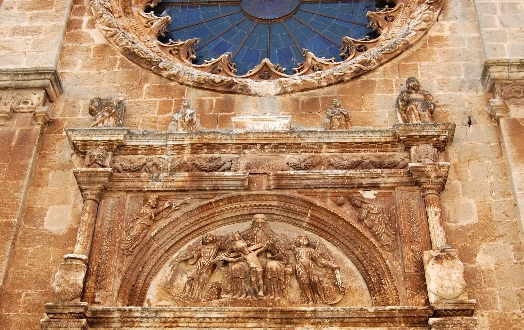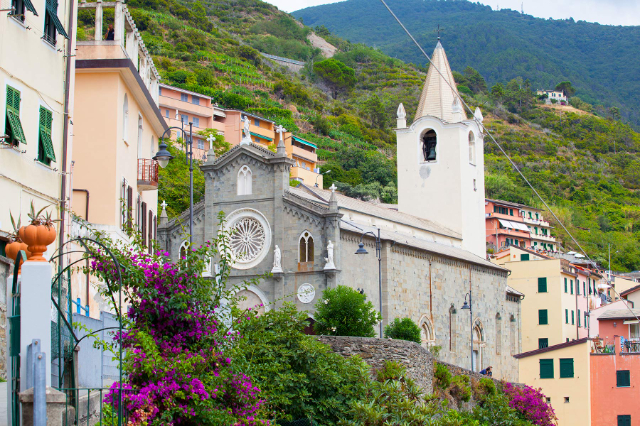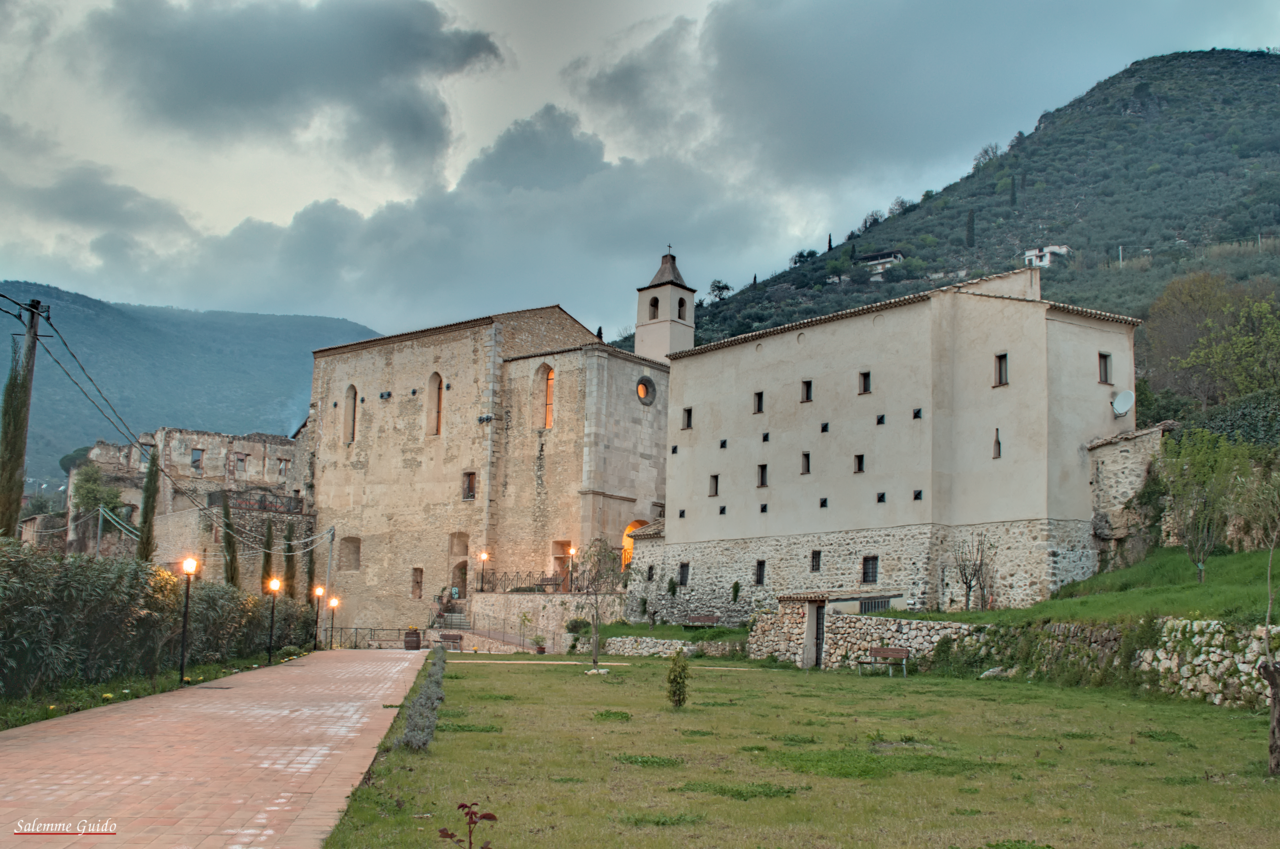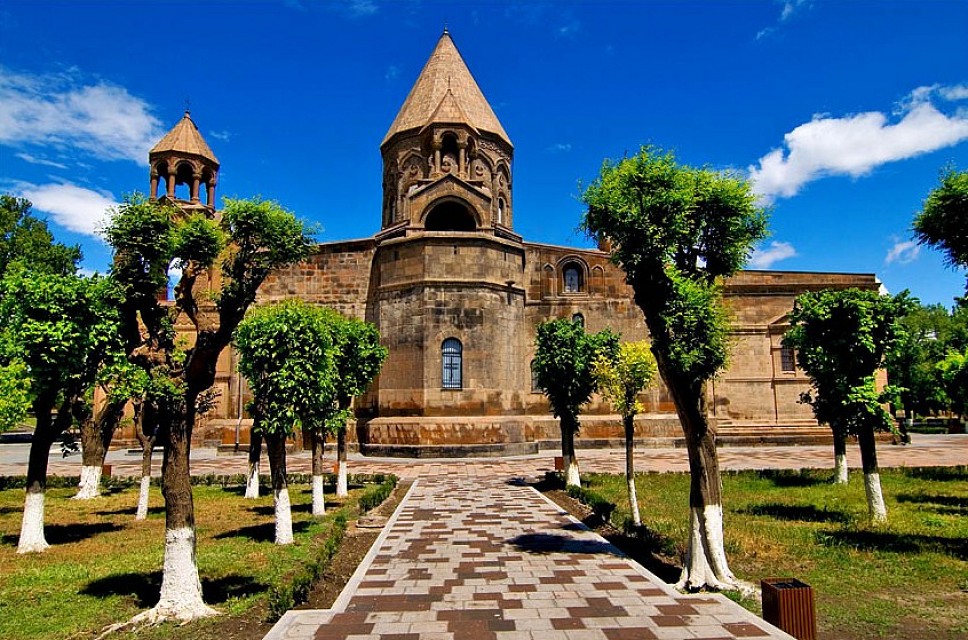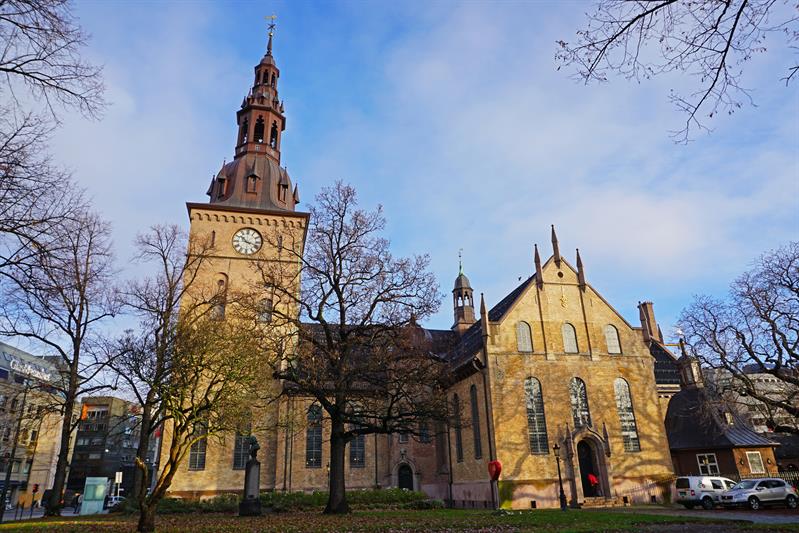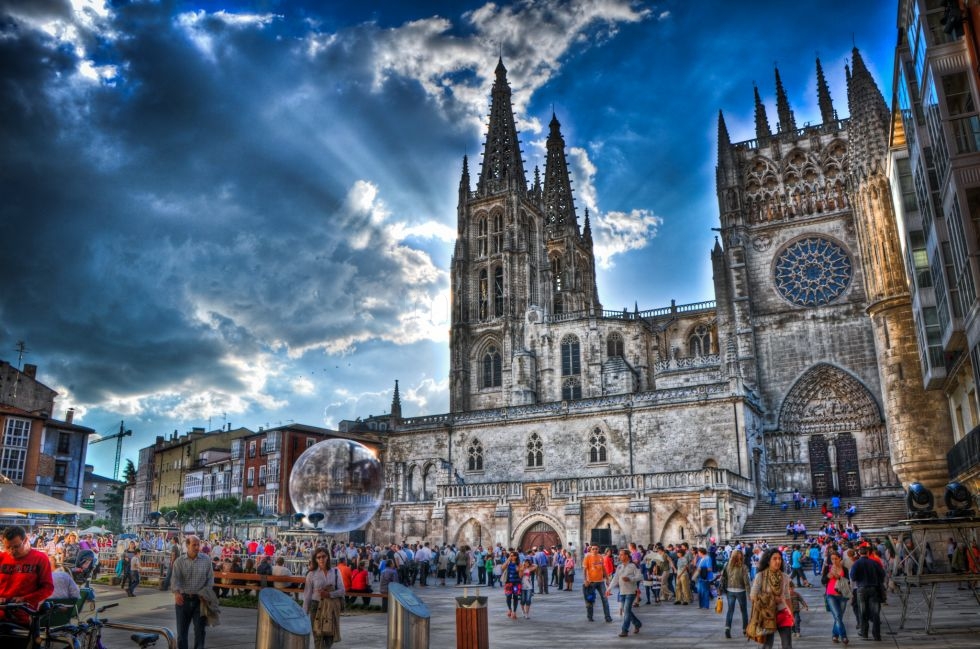The church that can be admired today is the result of work carried out in the 16th century and enlarged in the 18th century.
The façade is magnificent for its exquisite, richly decorated Renaissance portal, concluded by a large rose window adorned with a series of putti holding scrolls and motifs of vine shoots and bunches of grapes. The interior of the church, with three naves (which became five in the 18th century), has a Latin cross plan with two large chapels, one dedicated to the patron saint of the city, St. Gregory the Great, the other to the Holy Trinity. Leaning against a column in the nave is another significant monument; a marvelous walnut pulpit, dated 1608, by an author who remains unknown until now. The majesty of the church is accentuated by the staircase leading to the chancel with the apse adorned with as many as 18 gilded statues. Outside the church, one can admire the bell tower consisting of five floors marked by cornices. The tower is rich in statuettes and masks: at the top, near the cornice dividing the third from the fourth floor are clearly visible symbols of the four evangelists, the angel (St. Matthew), the lion (St. Mark), the bull (St. Luke), and the eagle (St. John).
